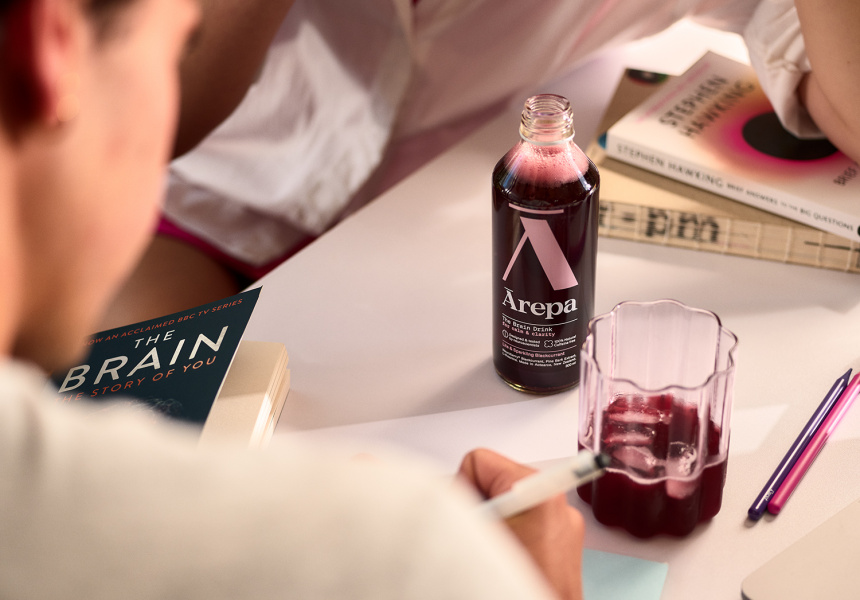New Zealander Angus Brown was selling energy drinks when he first landed on the idea that would define his next career phase.
“I started to think, if Red Bull can be a billion-dollar product, why can’t a brain health drink exist?” Brown says. “Why can’t it improve your mental performance but also, more importantly, keep you calm? Why can’t it improve the health of your brain if you take it regularly?”
Ārepa is a Te Reo Māori transliteration of the word “alpha”. And in this case, speaks to the unique frequency of alpha waves found in the brain.
Never miss a moment. Make sure you're subscribed to our newsletter today.
SUBSCRIBE NOW“The mission really is, we exist to make brains work better,” Brown says. “Our goal is to delay the onset of neurological decline through science-backed, scalable, accessible brain food.” The potently purple drink is part of a category of ingestibles called nootropics, which manufacturers claim can improve brain functions such as memory and concentration.
According to Brown, the “brain drink” effects include short-term mental stimulation without the reliance on caffeine. He says regular drinkers are “students before exams, busy corporate professionals, people doing public speaking, athletes”. Alert but not awake is the selling point for anyone who battles the 3pm slump but doesn’t want another shot of espresso in their day.
The original drink is geared towards performance. But a sparkling iteration has been designed for calm and clarity. The formula is also available as a shot, in powder form and also packaged into daily capsules.
Whether you drink it to improve concentration or just because you’re nostalgic for the Ribena-esque flavour (minus the sweetness), there are three main ingredients at play.
Neuroberry blackcurrant
Despite the sci-fi sounding name, Neuroberries are just a variety of blackcurrant. Brown favours the Neuroberry blackcurrant for Ārepa because of its inky and intense colour, which is the result of antioxidant-rich pigments called anthocyanins. “These Neuroberries have exponentially higher levels of anthocyanins than blueberries, acai berries, strawberries or raspberries,” says Brown. “They are one of the most purple foods on the planet.” Native to New Zealand, Neuroberries have high levels of anthocyanins thanks to the South Island’s intense UV levels, which create a stronger pigment than blackcurrants grown elsewhere.
L-theanine
L-theanine is extracted from green tea using a process called “precision fermentation”, which uses microbes to produce a very pure distillate. “Basically, it’s a calming amino acid that reduces anxiety without making you drowsy,” says Brown. “It counters the jitteriness you get from too much caffeine consumption.”
Enzogenol pine bark extract
Pinus radiata – the Monterey or radiata pine – may not be native to New Zealand, but it accounts for a massive percentage of pine plantations there. For the timber industry, bark is a waste product. Ārepa takes these offcuts to create another antioxidant-rich ingredient. “The health compounds in fruits are often more found in the skin, and it’s similar to trees, where the health compounds are found in the bark,” says Brown.
The extract is called Enzogenol, a concentrated powder produced with a water extraction method. Brown claims it has circulation benefits and can improve cognitive issues caused by conditions like ADHD. The only problem is the extract doesn't exactly taste the best. “Pine bark tastes horrible,” says Brown. “So we spent a lot of time working with our blackcurrant juice and natural flavours to mask the bitterness and astringency that comes with it.”
Ārepa is now available online and in-store at Woolworths, Coles, Harris Farm and independent grocers nationwide.
This article was first published on August 11, 2022 and has since been updated. Additional reporting by Alice Jeffery.
We hope you like the products we recommend on Broadsheet. Our editors select each one independently. Broadsheet may receive an affiliate commission when you follow some links.



